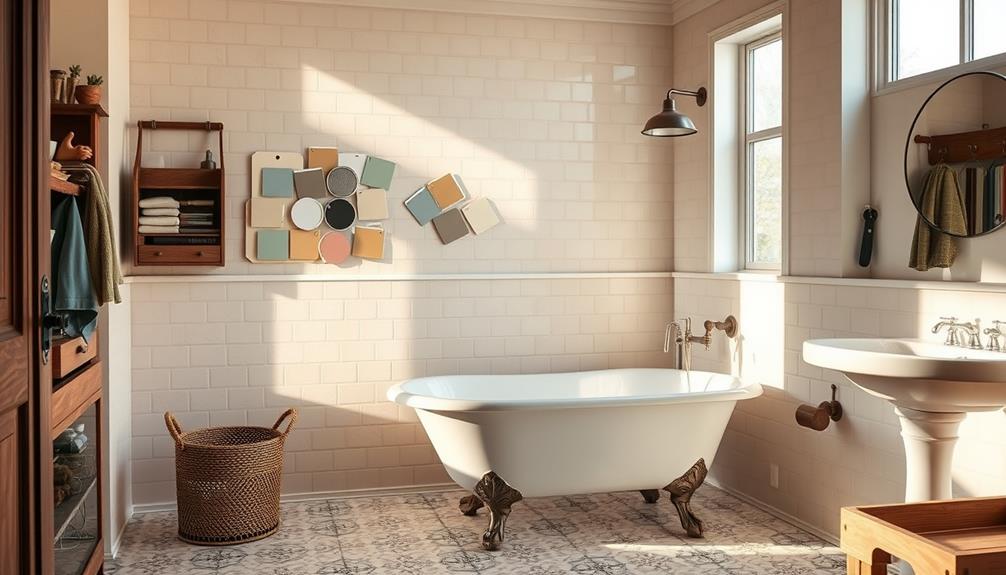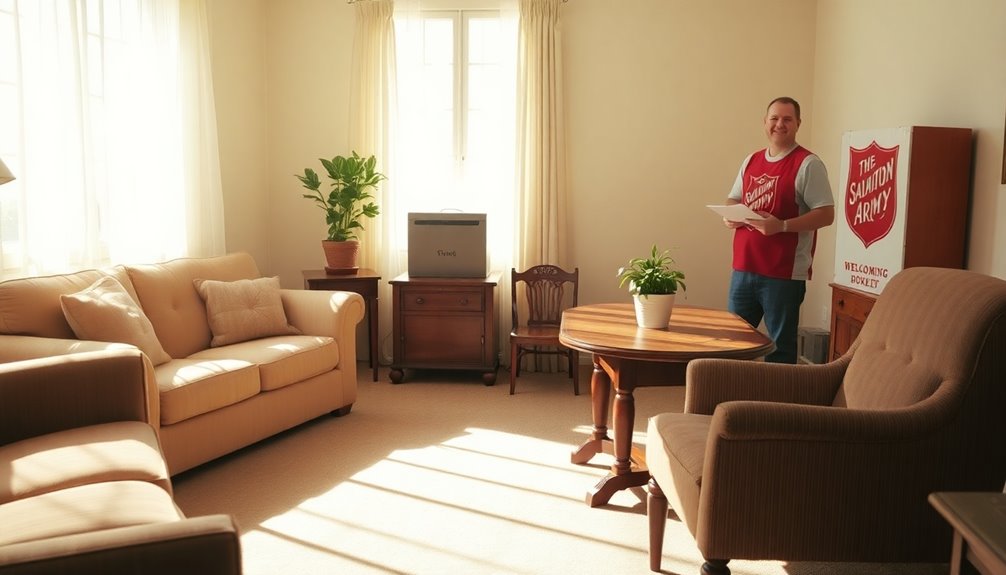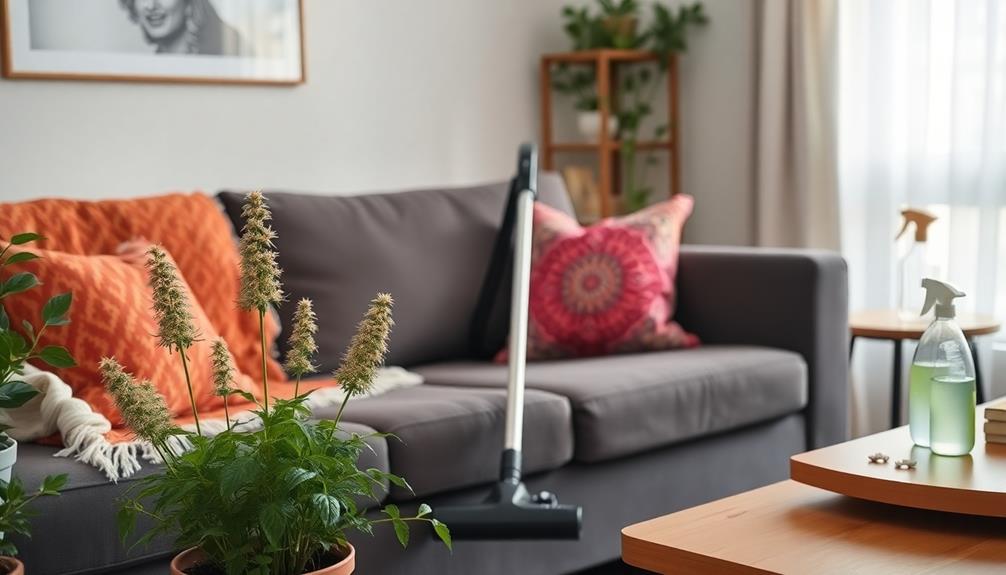When embarking on your bathroom renovation, it’s crucial to first evaluate the current layout and pinpoint any inefficiencies. Take measurements of the space and assess the existing fixtures to determine what updates are needed. Then, create your design vision by seeking inspiration and sketching out your ideal layout. Be sure to plan for demolition and have alternative facilities prepared, prioritizing safety by turning off the water and electricity. Select durable finishes and amenities that align with your personal style, and pay close attention to detail when finalizing the installation and decor. By following these steps diligently, you’ll establish a solid foundation for your project, leading to more satisfying results in the future. Remember to research local building codes and secure necessary permits when considering your bathroom remodel. It’s essential to set a realistic budget and timeline for the project as well. For additional guidance, explore bathroom remodeling business tips that offer expert advice and insights to help you navigate the process. As you navigate the process of remodeling your bathroom, be sure to seek out reputable contractors and suppliers to ensure quality work and materials. Additionally, consider incorporating energy-efficient and eco-friendly options into your renovation to reduce long-term costs and environmental impact. By staying informed and organized throughout the project, you can avoid common pitfalls and achieve a successful outcome. Explore ‘bathroom remodeling tips‘ for more expert advice and insights to help guide you through the renovation process.
Key Takeaways
- Assess your current bathroom layout to identify inefficiencies and fixtures that need replacement based on your budget and design vision.
- Gather inspiration and sketch your ideal design to communicate effectively with contractors about desired changes and amenities.
- Prepare for demolition by arranging alternative bathroom facilities and ensuring safety by turning off electricity and water supply.
- Choose durable materials and a cohesive color scheme, considering high-quality fixtures and smart amenities for modern functionality.
- Verify plumbing and electrical connections prior to installation, and select decorative elements to enhance the overall aesthetics of the new bathroom.
Assess Your Current Bathroom
Before diving into your bathroom remodel, it's vital to conduct a thorough evaluation of your current bathroom. Start by examining the existing layout to pinpoint any inefficiencies or wasted space that can be improved.
Consider how professional architectural solutions can enhance the functionality of your space. Are there fixtures like the bathtub, shower, vanity, or toilet that need replacing? Take note of their condition and how they align with your budget.
Next, measure the dimensions of your bathroom accurately. Understanding these measurements is important, as they'll help you visualize how changes to the layout might enhance space utilization and flow.
Don't forget to document any plumbing and electrical considerations, especially if you plan to relocate fixtures or make significant design changes.
Sketch a preliminary design or gather inspiration images to help visualize the desired changes. This can serve as a great conversation starter when discussing your plans with a contractor.
They'll provide valuable feedback on the feasibility of your ideas and guide you through the renovation process. By evaluating your current bathroom thoughtfully, you'll lay a solid foundation for a successful remodel.
Define Your Design Vision
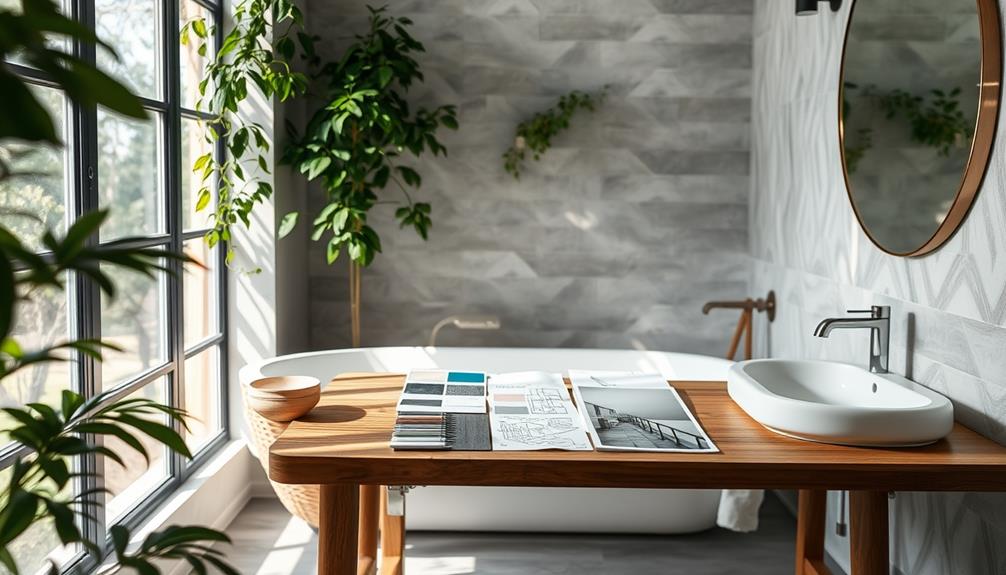
Defining your design vision is an important step in the bathroom remodeling process. Start by evaluating your current bathroom layout and identifying changes that align with your vision.
Think about desired amenities, like a soaking tub or a new shower, and how these elements will fit into your space. Consider how the unique aroma in homes can enhance the overall experience, similar to how burning coffee beans can create a welcoming atmosphere.
Utilize online platforms, like Pinterest, to gather inspiration and visualize your ideal bathroom. Create a digital collection of images that reflect your style preferences, which will help you make informed decisions about fixtures and finishes.
Sketch your ideal design to discuss with a general contractor; this guarantees you can visualize changes and avoid costly mistakes during the remodel.
Consider the structural requirements for heavy installations, as they could impact your design. Be mindful of potential material shortages that might affect your timeline.
Defining your budget early is vital, as typical remodeling costs range from $175 to $225 per square foot. Understanding your budget will help you make choices that prevent financial strain and avoid issues like water damage.
With a clear vision in place, you're on your way to creating a beautiful, functional bathroom.
Plan for Demolition and Prep

When you're ready to plunge into the demolition phase of your bathroom remodel, it's vital to plan ahead to guarantee a smooth process. First, prepare for a temporary loss of the bathroom by arranging alternative shower and restroom options. This will help you stay comfortable during the renovation.
Additionally, consider preparing your home by ensuring that the rest of your space remains clean and organized to prevent dust and debris from spreading during the remodel. For those looking for professional cleaning services, having a clean environment can help maintain focus on the tasks at hand.
Next, prioritize safety by turning off the electricity at the main breaker box and shutting off the water supply. This step prevents leaks and hazards while you work. Remove all accessories and non-fixed items from the bathroom, storing any that will be replaced in a safe location to avoid damage.
Identify any load-bearing walls before starting demolition. If you're removing the toilet, plug waste pipes to maintain structural integrity and prevent plumbing issues.
It's important to schedule inspections and approvals from town officials for plumbing and electrical work. Proper planning and sequencing of these tasks will help you meet inspection requirements and avoid delays.
Choose Finishes and Amenities
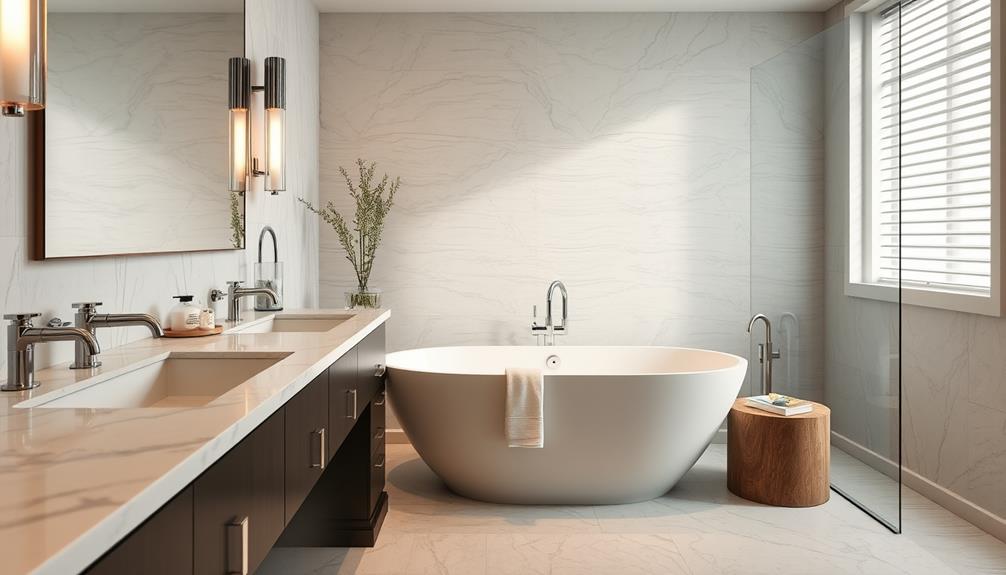
Choosing finishes and amenities for your bathroom remodel can greatly influence both its style and functionality. Start by prioritizing durable materials like porcelain or ceramic tiles, which resist moisture damage and come in various aesthetic options. This choice not only enhances durability but also elevates the overall look of your space.
Next, consider your color scheme. Lighter colors can make a small bathroom feel larger, while darker shades add warmth and richness. Pair these colors with grout options that complement your tiles—light grout brightens the area, while dark grout hides stains effectively.
Investing in high-quality fixtures, such as faucets and showerheads, improves aesthetics and enhances water efficiency, saving you money in the long run. Finally, think about incorporating smart amenities like motion-sensor faucets or heated towel racks, which boost both functionality and luxury.
Here's a quick reference table to help guide your choices:
| Finishes | Color Schemes | Smart Amenities |
|---|---|---|
| Porcelain Tiles | Light Neutrals | Motion-Sensor Faucets |
| Ceramic Tiles | Dark Tones | Heated Towel Racks |
| Glass Accents | Monochromatic | Programmable Showers |
| Natural Stone | Contrasting Colors | Smart Mirrors |
| Vinyl Flooring | Earthy Tones | Water-Saving Fixtures |
Finalize Installation and Decor
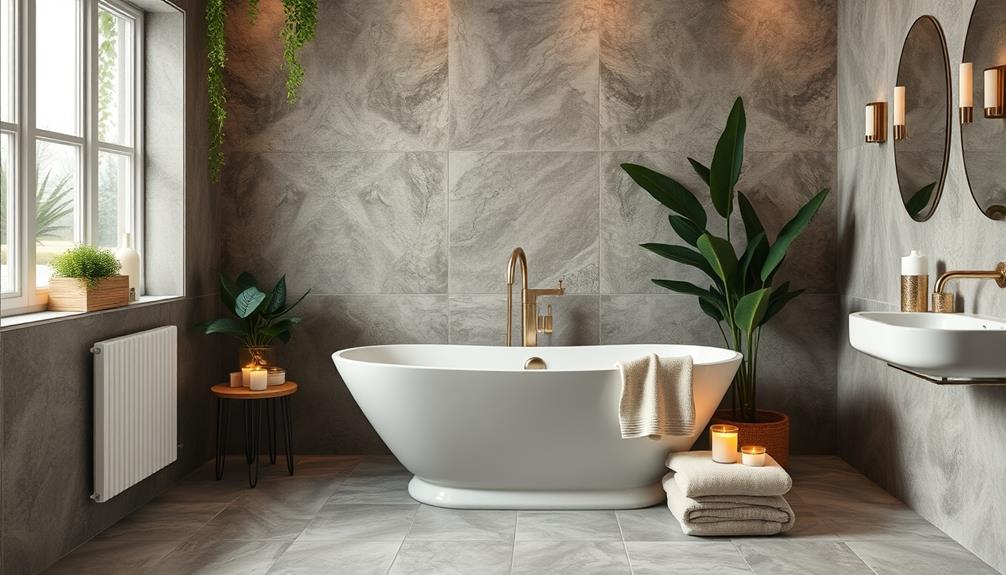
With finishes and amenities selected, the next step is to finalize your installation and decor. First, verify all plumbing and electrical connections are secure before adding any new fixtures to prevent leaks and malfunctions.
Regular maintenance can also help keep your new fixtures in top shape for years to come, especially if you consider plans that cover essential appliances. Once everything's checked, apply a moisture-resistant paint on the walls to enhance durability and ease of cleaning in your bath.
Now, focus on the finishing touches. Choose a grout color that either matches or contrasts with your tile finishes, paying attention to the overall design's aesthetic impact.
Select decorative elements that enhance your space—think mirrors, towel bars, and bath accessories that complement your color scheme.
Consider incorporating smart devices, like motion-sensor lights or heated towel racks, to modernize your bathroom and boost functionality.
These elements not only elevate the space but also provide convenience for daily use, aligning with the trend of integrating smart home solutions for enhanced comfort and efficiency.
Frequently Asked Questions
In What Order Should You Renovate a Bathroom?
You should start by removing old fixtures, then address plumbing and electrical work. Next, install flooring and drywall, followed by cabinets and fixtures. Finally, add decorative elements and finish with painting and accessories for a polished look.
How to Begin a Bathroom Renovation?
You think starting a bathroom renovation's simple? First, create a detailed budget, assess your layout, gather design inspiration, and prepare by shutting off utilities. It's surprising how much planning it takes before tearing things apart!
Where Do I Start When Planning a Bathroom Renovation?
When planning a bathroom renovation, start by establishing a clear budget and evaluating your current layout. Gather design inspiration online, consult a contractor for feasibility, and create a detailed checklist to keep everything organized.
Can I Renovate My Bathroom for ?
You can renovate your bathroom for $5000, focusing on essential updates like fixtures and paint. Consider DIY projects to save money, and choose cost-effective materials to maximize impact while staying within your budget.
Conclusion
As you wrap up your bathroom remodel journey, remember that even the grandest palaces started with a single stone. You've assessed, envisioned, and planned with care—now it's time to enjoy the transformation. With every tile you lay and fixture you install, you're crafting not just a bathroom, but a personal oasis. Embrace the changes, and soon your sanctuary will reflect your unique style, proving that with a little vision, you can create your own slice of paradise.
